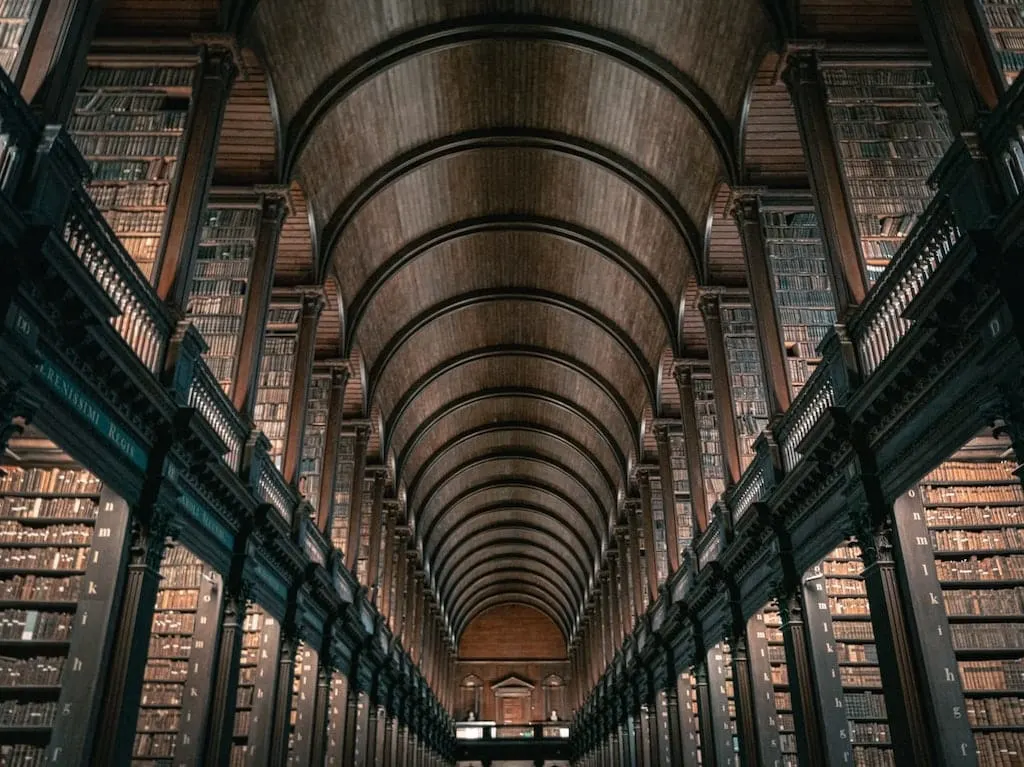Expert travel storyteller Jordan Adkins, founder of InspiredByMaps.com, brings a decade of adventures across 101 countries and 450+ UNESCO sites into rich, off-the-beaten-path narratives, melding ecological expertise with genuine, seasoned travel insights. His full bio can be found here.
Ireland is one of the world’s most captivating travel destinations, a place of abundant and infinitely beautiful must-visit locations from spooky goals and gravesites to striking castles and historical abbeys. Not to mention the Guinness Storehouse…
There is so much to see here. It can all seem a little overwhelming — but discovering the most famous landmarks in Ireland is an excellent place to start…
Amidst all the history here it is easy to forget that Ireland is also extraordinarily well-endowed with incredible natural landscapes with waterfalls, wind-swept coastlines, stunning mountains, and the improbably Giant’s Causeway. Many you might recognize from films made in Ireland.
There is so much to places to visit in Ireland; you could spend a lifetime exploring its riches and only just scratch the surface. This is why we have developed this cheat sheet to help you with your travels.
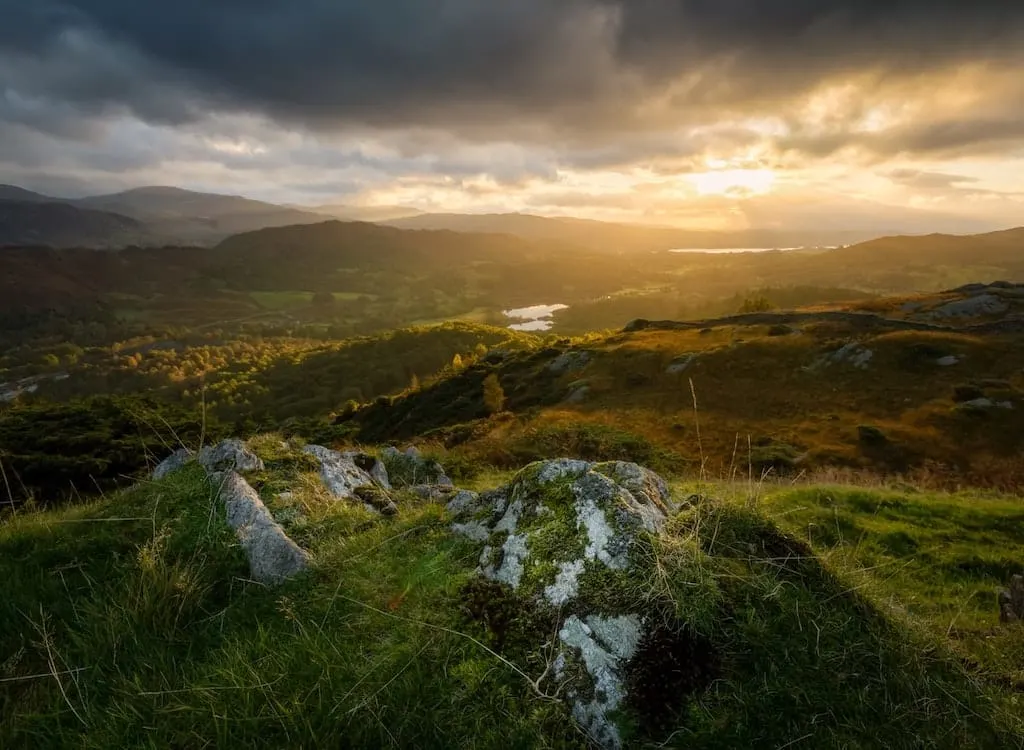
But first – what is a landmark?
A landmark is a recognizable natural or artificial feature that typically stands out from its environment and has become a local or national symbol. For modern tourists, a landmark is useful for navigation – in terms of both being a physical waypoint and in trying to help you organize your itinerary.
Getting the off-the-beaten-track is all well and good, but at the end of the day – there are some spots you just have to see when you visit a country. Think the Sydney Opera House or Christ the Redeemer. Instantly recognizable places you couldn’t miss if you tried. And Ireland has more than its fair share…
When approaching a trip to this magical land, you will want to tick off as many famous Irish landmarks as you can – and the best way is to do that is often by taking a tour, or hiring a car to get around. Public transport can also be used to get to many places and is useful if you also plan to explore the pubs of Dublin and Ireland.

We have decided to include sites in both the Republic of Ireland and Northern Ireland (part of the United Kingdom) is either described as a country, province or region, depending on who you talk to. As there are no border controls, and Ireland is an island, this makes the most sense here as travellers planning out their adventures can easily cross between both without any hassles.
There is a lot to explore in Ireland — and no list of iconic Irish landmarks could ever be exhaustive. But, we have tried to get the top highlights by putting a call out to our favourite travel bloggers and asking them to regale us with stories and helpful tips about their best-loved.
This way, you have a reasonable frame of reference to inspire your Ireland travels from which you could choose a few landmarks that you absolutely cannot miss… or cram as many as possible into one trip.
If you plan it right — and have enough time—, you might just hit them all. And discover plenty more of your own highlights of Ireland while you’re at it!
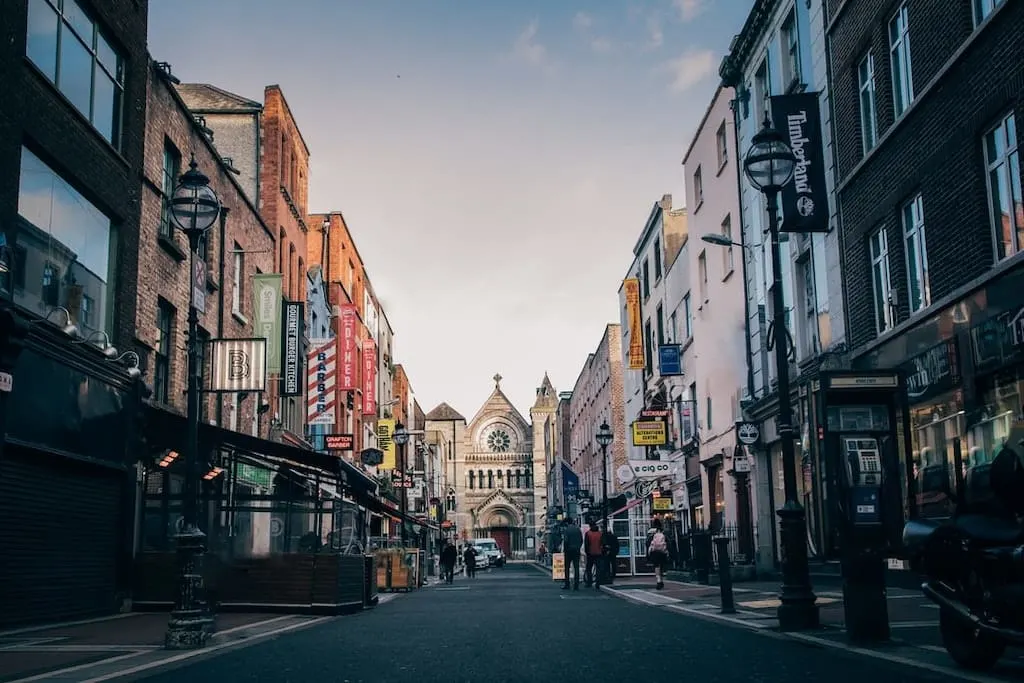
30 Famous Landmarks Of Ireland To Plan Your Travels Around! 🍀
Page Contents
- 30 Famous Landmarks Of Ireland To Plan Your Travels Around! 🍀
- Ben Bulben
- Blarney Castle
- Brú Na Bóinne
- Bunratty Castle & Folk Park
- Carrauntoohil
- Carrick-a-rede Rope Bridge
- Castle Ward
- Cliffs of Moher
- Derry City Walls
- Dun Aonghasa
- Dunguaire Castle
- Dunluce Castle
- Dunquin Pier
- Gap of Dunloe
- Giant’s Causeway
- Glendalough Monastic Site
- Guinness Storehouse
- Kilmainham Gaol
- Kylemore Abbey
- Mussenden Temple
- Rock of Cashel
- Skellig Islands
- Slieve League
- St. Patrick’s Grave
- The Custom House
- The Dark Hedges
- The Stairway to Heaven
- Titanic Belfast
- Torc Waterfall
- Trinity College
Ben Bulben
Ben Bulben, the mountain immortalized by the Irish poet William Butler Yeats, is perhaps the most famous landmark of Ireland other than the Blarney Stone. Ben Bulben dominates the countryside of County Sligo, as well as Irish literary heritage. In his famous last poem Under Ben Bulben, Yeats decreed that he be buried near the mountain, which he was.
The summit of Ben Bulben is a popular walking destination. From the south side, it is an easy walk up the gentle slope. From the summit, there are stunning views over the coastal plain of north County Sligo and the Atlantic Ocean. The land adjacent to the western edge of the ridge is private farmland and not open to the public. A climb up the north side is treacherous and requires rock climbing skills. There is also a groomed path you can take around the base of the mountain.
Ben Bulben got its distinctive shape from the receding glaciers of the Ice Age. Ben Bulben is one of the Dartry Mountain range. The layers of the mountain formed approximately 320 million years ago under a shallow sea. Uppermost are limestone layers. Further down, the lower slopes consist of shaly mudstone known as the Ben Bulben Shale Formation. Seashell fossils exist throughout the layers of the mountain. The shale layer also holds some corals.
If the mountain piques your curiosity, be sure to check out Yeats’ grave in the churchyard of Saint Columba’s Church in the village of Drumcliff, about six kilometres away, in the shadow of the famous mountain.
Explored by Tom Bartel from Travel Past 50
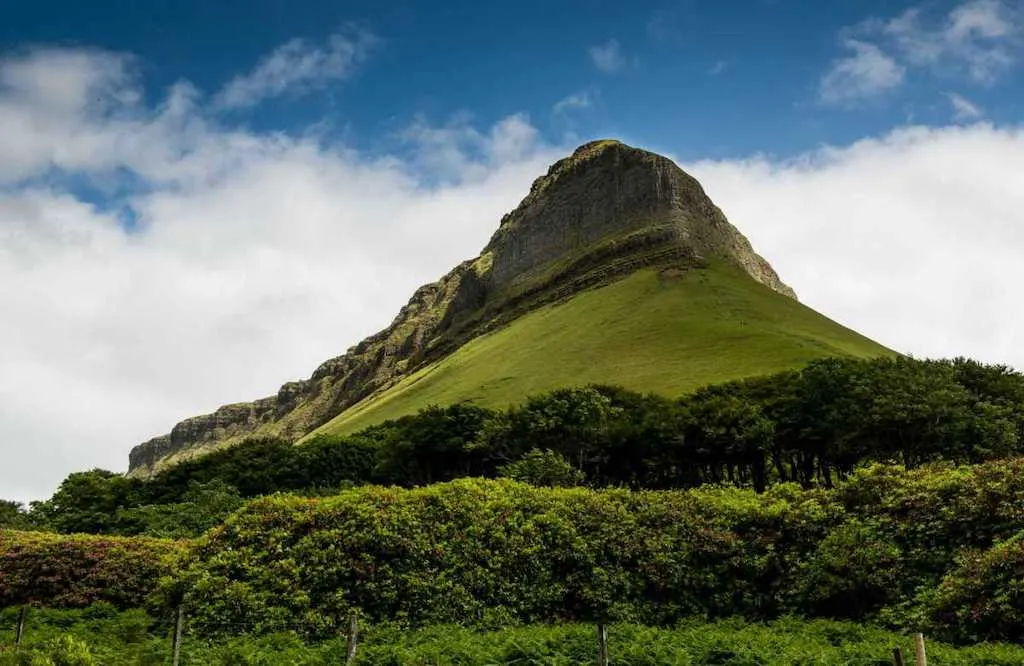
Blarney Castle
Blarney Castle is a medieval castle located 10km away from Cork, Ireland, 2nd biggest city. It is famous for its stone, which the legend says that whoever kisses it, is given the “gift of the gab” (a great eloquence). What makes kissing the stone extra-special is that the stone is on top of the castle, and you have to lie on your back with a staff member holding you while you are getting your gift of the gab. Famous people to have kissed the stone include Winston Churchill and Laurel and Hardy.
One legend says that in the 15th century, Cormac Laidir MacCarthy, the castle owner, had to go to court to defend himself. After a prayer, a voice told him to kiss the first stone he saw. He did and was so eloquent in his trial that he won. He moved the stone on top of his castle, persuaded that the stone made him win.
But visiting Blarney Castle is not just about the castle which is pretty much in ruin, and kissing a stone, trying to forget that hundreds have kissed it before you… Even in those ‘new-normal’ times, it is still possible to kiss it (it is now disinfected after every kiss). There are also many gardens such as a poisonous garden, a fern garden (making you think you are entering Jurassic Park), and many more. There is even a lake at the end of the property. In addition, there is a private mansion on site, Blarney House, which can be visited for an extra fee.
How long you should visit for depends on your interest and the crowd. If you just want to see the castle and kiss the stone, you can be out in less than an hour. But to enjoy the castle and the sizable gardens, a few hours are necessary. Blarney castle website advertises 3 hours, and that sounds about right.
When visiting, you should also consider that the Irish weather is unpredictable, and rain is always possible. But considering how nice the gardens are, try to visit from May to October when trees have leaves and flowers are blooming. You can easily get here by bus 215 from Cork.
Explored by Ben McHenry from A Walk in the World
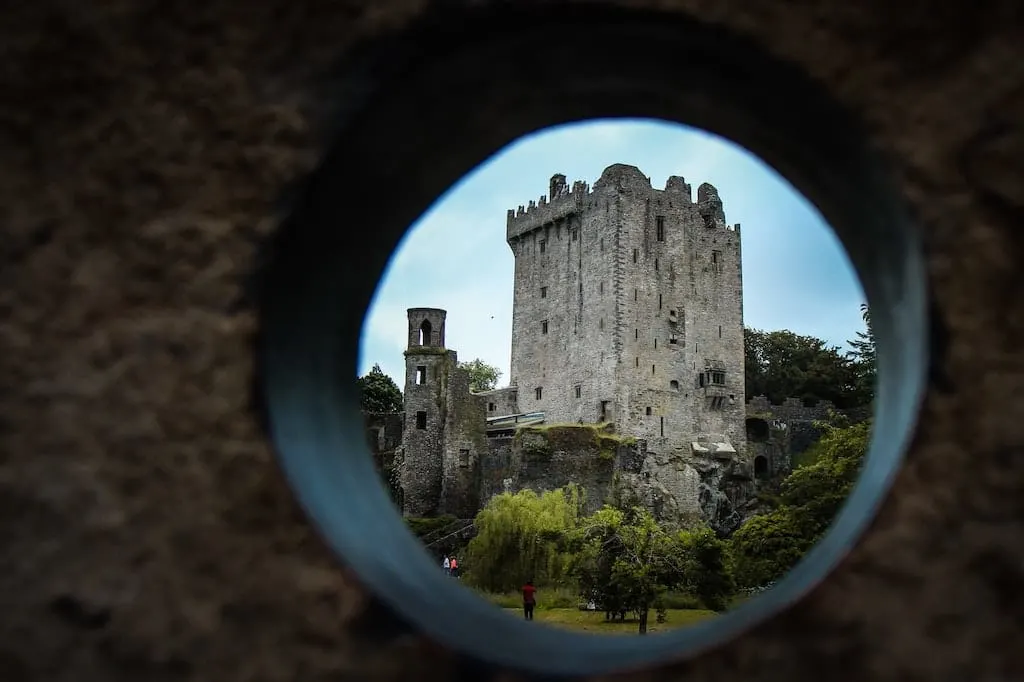
Brú Na Bóinne
Brú na Bóinne (also known as Boyne’s Palace or Boyne’s Mansion) or Boyne Valley Tombs, is a place in County Meath, Ireland, situated in a curve of the Boyne River. It comprises one of the most interesting geological landscapes in the world dating back to the Neolithic period, comprising Knowth, Newgrange and Dowth ‘s large Megalithic passage graves as well as around 90 other monuments.
The related archaeological history of these sites is dubbed the “Boyne culture.” The location is one of the most famous places in Ireland and has been a UNESCO recognised World Heritage Site since 1993, known as “Brú na Bóinne-Archeological Ensemble of the Bend of the Boyne”.
Accompanied by some forty satellite tombs, Brú Na Bóinne forms a funerary landscape known as having significant ceremonial importance, drawing later Iron Age temples, along with those in the early Christian and mediaeval periods.
Positioned about 40 km north of Dublin on a hill between the Boyne and Mattock rivers, the Brú Na Bóinne is part of a region rich in tales from the ancient history of Ireland. The region is still mostly agricultural and has been widely studied by archaeologists and historians for over a hundred years, with archaeological digs discovering new details even today.
The Knowth community, whose oldest structures here date from the Neolithic era and the youngest from the Anglo-Norman era, has created thirty monuments and sites that we know of, including petroglyphs, enclosures, sites of conquest and field structures. The Newgrange party is strictly ancient, with a ringfort, a cursus, a henge and a passage pit. The Dowth community is similar to those at Newgrange except in the shape of a church and a castle; there is mediaeval evidence.
Together, Brú na Bóinne represents Europe’s largest and most important concentration of prehistoric megalithic art and is not to be missed when you visit Ireland. It is only comparable with the ancient majesty of Skara Brae in Scotland or Stonehenge in England, but the scale of the structures makes this place our favourite.
The fascinating experience of entering the structures is enhanced with the onsite he museum and guest centre, which is extremely well put together. You can reach Brú na Bóinne by bus or on tour, but to make the most of the surrounding finds it is best to hire and explore by car.

Bunratty Castle & Folk Park
Bunratty Castle and Folk Park is a landmark in Ireland not-to-be-missed. Combining a stunning castle with a folk park, this tourist attraction in County Clare, just 20 minutes from Limerick City is somewhere everyone should visit when visiting Ireland.
Sharing its name with the town it is located in, Bunratty Castle is a medieval castle which is one of the most complete and authentic medieval castles in Ireland. The current castle building was built in the 1400s and is the fourth castle to stand at the site. The site was also once a Viking trading camp in the late 900’s.
Within the medieval castle are several floors to be explored, many of which are furnished with 15th and 16th-century furniture and tapestries. If you want to add something special to your Ireland itinerary, why not book a spot at the Medieval Banquet held every evening at Bunratty Castle. You might even get a chance to act as Lord and Lady of the Manor.
As well as the castle, the site at Bunratty is also home to a folk park. This gives visitors the chance to experience village life in Ireland during the 19th century. With over 30 buildings dating from over a century ago, you can visit various farmhouses, shops, workshops and even a school. Each is furnished with furniture and artwork from the period in which it would have been inhabited, and you’ll even come across real peat fires, giving the whole place an authentic feel.
During certain times of the year, you’ll find costume characters to interact with who go about their “daily” 19th-century life. Bunratty Castle and Folk Park are truly a landmark in Ireland you must put on your Ireland bucket list for your visit to the Emerald Isle.
Explored by Cath from Travel Around Ireland
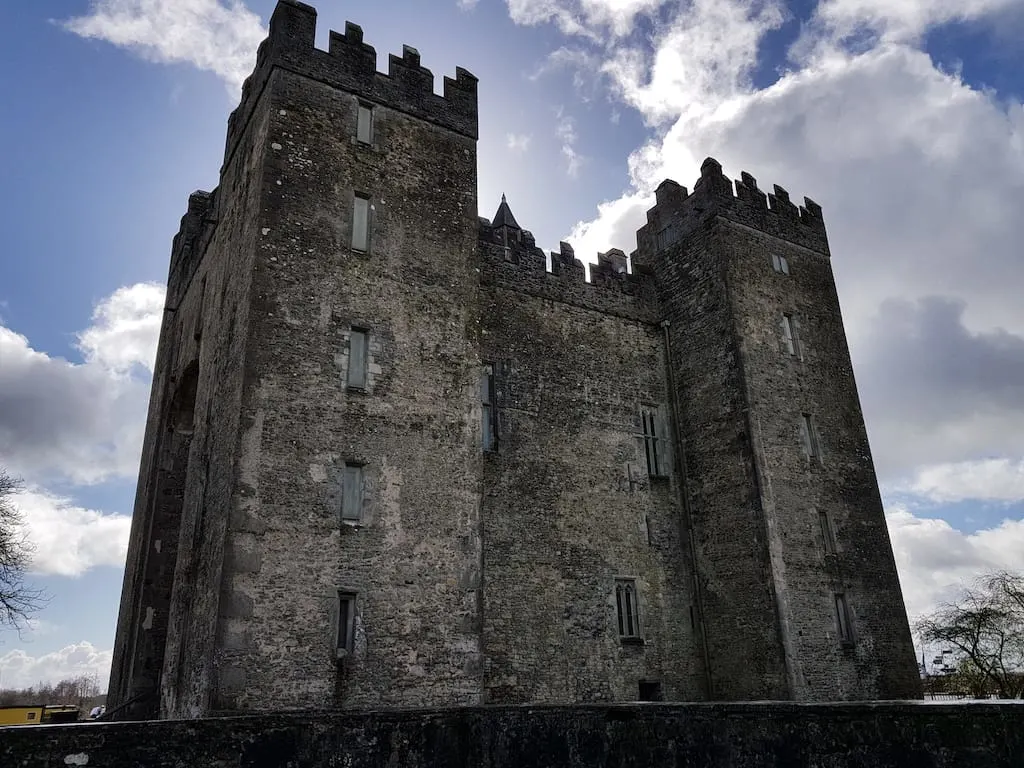
Carrauntoohil
Carrauntoohill isn’t the first place you think of when it comes to landmarks in Ireland, but if you want to see the great outdoors, then it’s one of the best places you can visit. Carrauntoohil is the highest point in Ireland located in County Kerry.
The mountain can be found in the MacGillycuddy’s Reeks, Ireland’s highest mountain range. If you’re in Kerry, this is easy to reach from anywhere in the county. At the same time, Kerry can be reached from most parts of Ireland via a three to four-hour drive.
Despite only being 1,038 metres (3,407 ft) high, Carrauntoohill is no walk in the park. It’s a serious climb that will take you a good half day to complete, and that’s if the weather is good. The most straightforward route up the mountain is via the Devil’s Ladder. The start from this route can be found in Cronin’s Yard. Until you reach the ladder, you follow the path and scramble up the ladder onto the ridge before ascending to the summit.
At the top, you will find a 5 m (16 ft 5in) cross which was erected in 1976. If it’s a good day, you’ll be treated to excellent views of the surrounding area. While if it’s a bad day, it’s best to move on as quick as you can. As I found out when I hiked to the summit, the weather can change in an instant and be very different from what you’ll find further down the climb! Don’t let that put you off though, Carauntoohill is a fantastic place to visit in Ireland and a climb you’ll enjoy and won’t forget in a hurry!
Explored by Tom from The Travelling Tom

Carrick-a-rede Rope Bridge
The Carrick-a-Rede Rope Bridge is one of the most iconic landmarks in Northern Ireland, and one of the best places to stop on a trip along the Causeway Coast. This is a small, narrow, bridge from the mainland which connects to a tiny island called Carrickarede, just off the shore. Carrick-a-Rede Rope Bridge is 20 meters across in length and sits 30 meters high above the sea.
It was first erected in 1755 by salmon fishermen, as they used the bridge to get their catch of fish across and back to the mainland. The current bridge that stands today was built in 2008. Today, Carrick-a-Rede Rope Bridge is a popular visitor attraction, operated by the National Trust. There is an admission charge of £9 per person for entry to the site. The scenery along the cliffs out to the sea is really spectacular here! The easiest way to get to Carrick-a-Rede Rope Bridge is by car, and there’s a large car park for visitors. It’s one of the top places to visit on the Causeway Coast, and it is about a 1 hour and 15-minute drive from Belfast.
If you aren’t driving, you can access Carrick-a-Rede Rope Bridge by bus, but it’s not very convenient. The most direct route is to take Bus 218 from Belfast to Coleraine and connect with Bus 402, which travels along the Causeway Coast and stops at Carrick-a-Rede Rope Bridge. You can also join a Causeway Coast day tour from Belfast which is an easier option—nearly all of the tours will stop at Carrick-a-Rede Rope Bridge.
This is one of the best things to do in Northern Ireland, and one of the most popular landmarks along the Causeway Coast!
Explored by Maja from Away With Maja
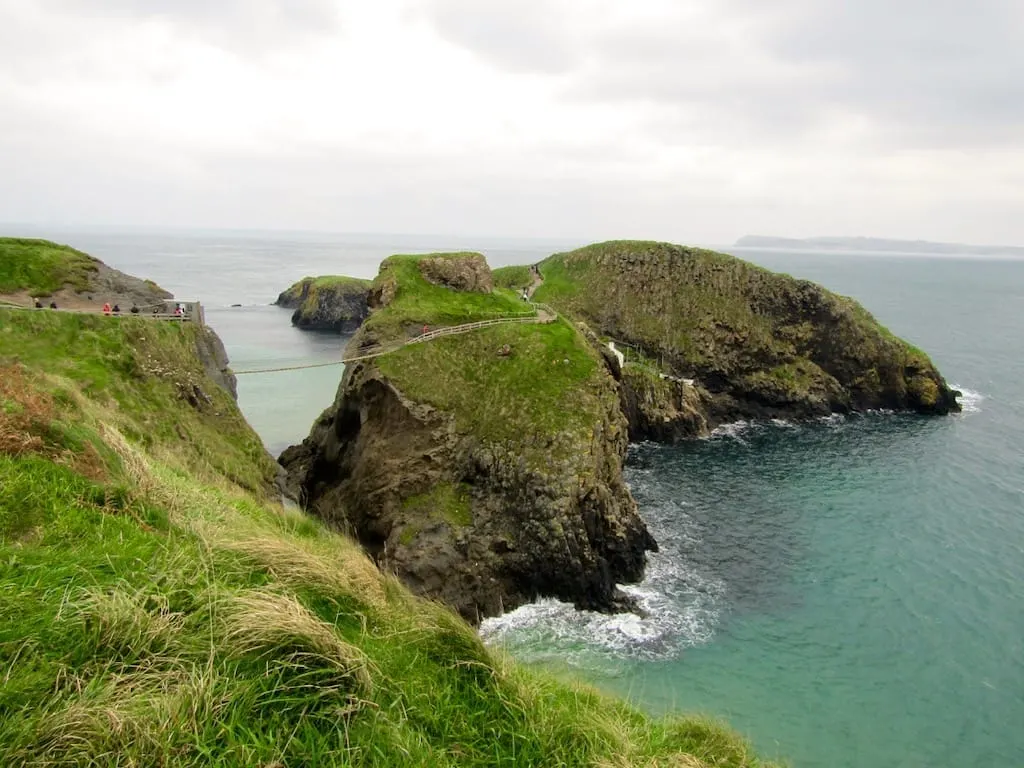
Castle Ward
Castle Ward would likely be the most significant stately home on the nearside of the Ards Peninsula and on Strangford Loch, and it is likely one of the most popular tourist destinations in the renowned scenic County Down at the moment.
Although this is partly because of a new-found global fame as Castle Ward is the setting of Winterfell and the home to the ‘King in the North’ from the Game of Thrones. The surrounding grounds also make backdrops for many scenes throughout the series.
But this somewhat off-the-beaten-track destination has always been a huge draw locally where it is found on the scenic Strangford Lough driving route and only a short distance from the car-ferry crossing between Strangford and Portaferry. Castle Ward itself is managed by the National Trust including acres of grounds with nature trails, coastal paths, and ancient structures around and in between.
The main areas, however, would be the manor home which offers free daily heritage tours through the old family home, the outhouses, and the sunken gardens. It also has a courtyard café. Then there is the old medieval castle, aka, Winterfell which has some fascinating outhouses as well as newer Game of Thrones attractions like archery, period dress-up and shopping, and they offer bike rental and tours to explore the various scenes found through the Game of Thrones Franchise.
With limited public transport routes to Castle Ward, it is almost necessary to have your own mode of transport. There is also a connecting caravan park for vehicles and camping as well as the Castle Ward Glamping Pods to bring some added incentive for a visit. Explored by Allan Wilson of It’s Sometimes Sunny in Bangor.
Explored by Allan Wilson from It’s Sometimes Sunny in Bangor
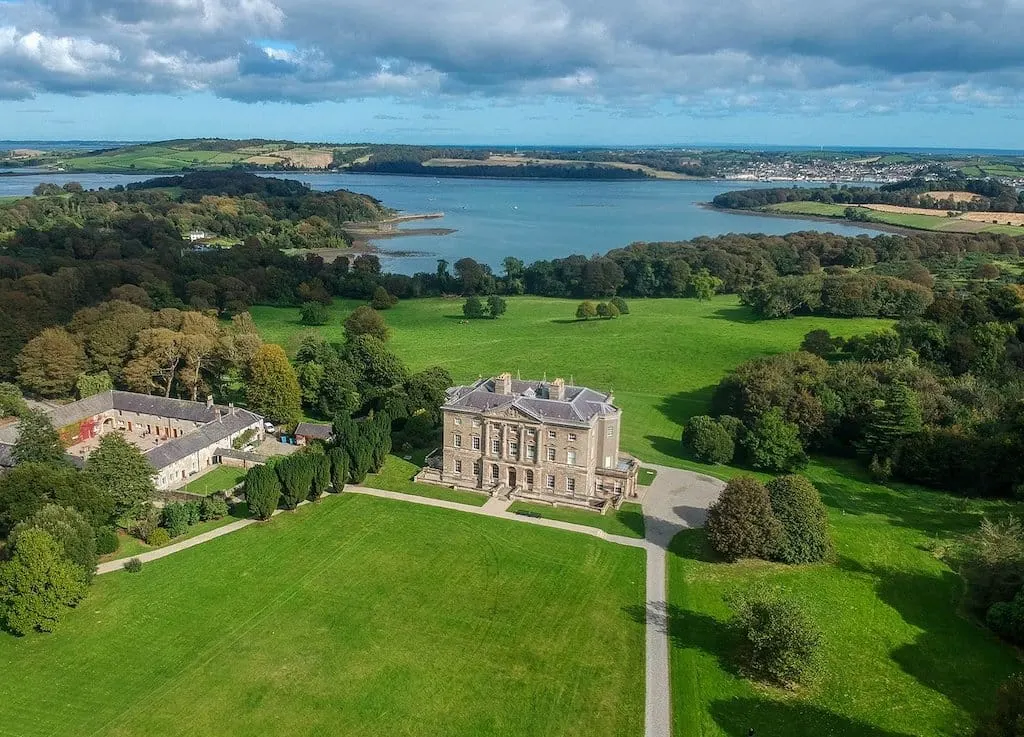
Cliffs of Moher
The Cliffs of Moher are the most popular landmark in Ireland and are part of the UNESCO Global Geopark. The cliffs are located on the west coast of Ireland along the Wild Atlantic Way and reach 702 feet in height at their highest point. You likely recognize them from one of the many movies that feature them like Harry Potter and The Princess Bride.
Visiting the cliffs is pretty straight forward. There is a parking lot where you pay per person as you enter and the cliffs are located a short walk from there. The visitors centre includes a restaurant and Murphy’s ice cream shop. We recommend the sea salt ice cream! You can walk around the cliffs in either direction to see unique views and over 20 species of sea birds.
While many visitors come to the Cliffs of Moher as part of a quick stop on a tour bus and view them from above, spending more time in the area will be much more memorable. You can take a ferry to see the cliffs from below which really gives you an idea of their massive size. You board the ferries at the nearby town of Doolin and can choose to visit the as well Aran Islands which is highly recommended.
After a day of exploring the Cliffs of Moher, you can enjoy an amazing meal at the Ballinalacken Castle Hotel, which has a perfect view of the sunset before heading back to Doolin to enjoy the pubs. There are only two main pubs in Doolin, so pick one to enjoy some local music and get something to eat and drink.
Explored by Dan & Michelle from HoneymoonAlways.com
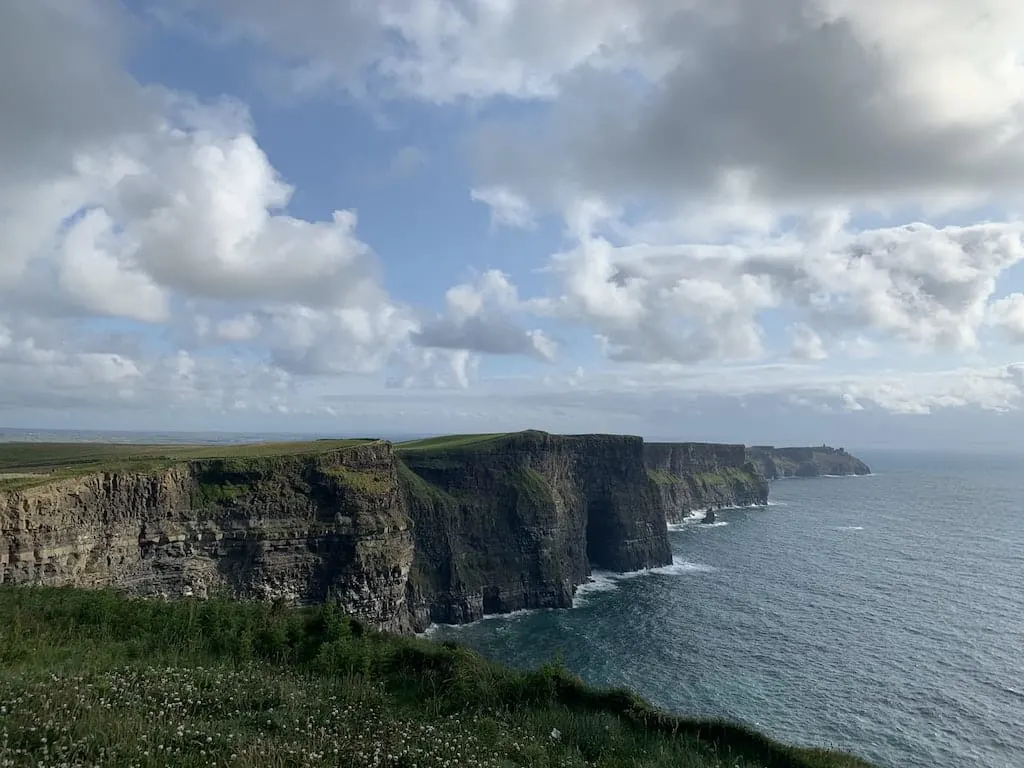
Derry City Walls
A stroll through Derry / Londonderry’s walls shows a charming city packed with tradition, traditions, curiosity and a lively cultural scene. Undoubtedly a famous landmark of Ireland, the walls of this city are a must-visit for those with an interest in Irish history. Derry is Ireland’s only intact entirely walled town and one of Europe’s best examples of Walled Cities, up there with Tallinn and Carcassonne in France.
The Walls were built by the Irish Society mostly during period 1613-1618 as defensive structures for England and Scotland colonialists who had come to Ulster as a result of the Ulster Plantation founded by James I. this was a direct result of an earlier community being ruined by Irish leader Cahir O’Doherty during the revolt of O’Doherty. The area was formally called Londonderry in the royal charter of 1613 as a consequence of a ground of companies setting up here from London, which the Irish Society’s construction of the city’s defences, were to protect. That is what later led to the name controversy between Derry / Londonderry city and district, an issue that still persists to this day.
The wall surrounds ‘Old Derry’, and there is a selection of Derry’s most famous places protected inside them that you should try to see, including the Apprentice Boy’s Hall and St. Columb’s Cathedral (the very first Protestant Cathedral ever to be built the first cathedral to be built and the first non-Roman Catholic cathedral to be built in Western Europe.
The Walls, about 1.5 km in diameter, form a promenade all around the city centre as well as provides a special walkway to display the architecture of the original city that still retains the Renaissance street grid to this very day. Butcher Gate, Bishop’s Gate, Ferryquay Gate, and Shipquay Gate are the main four entrances to the Walled City, but there are seven openings in total.
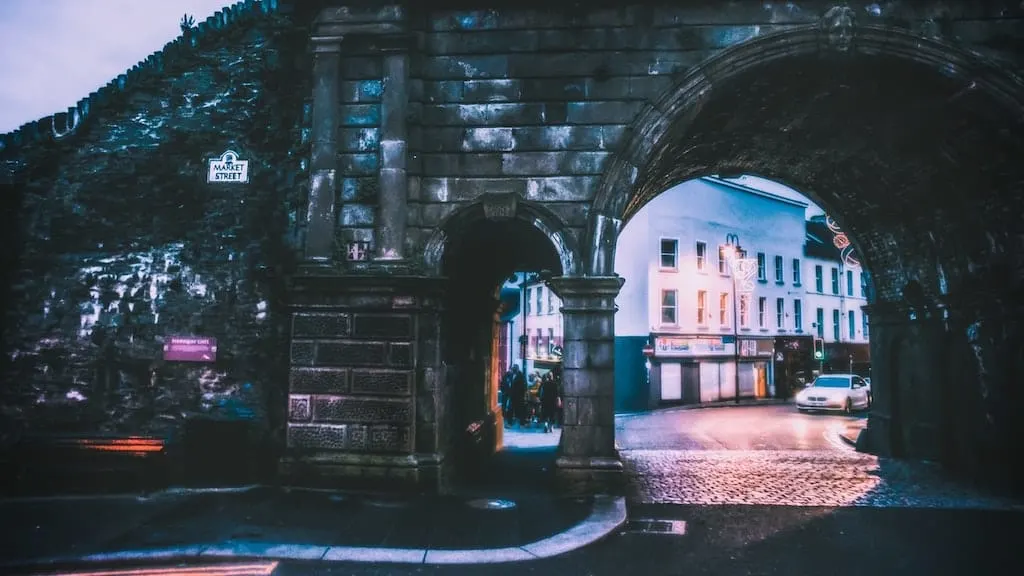
Dun Aonghasa
Dun Aonghasa is the main attraction on the island of Inis Mor, one of the three Aran Islands off the Western coast of Ireland. Dun Aonghasa (pronounced done-angus) is an ancient stone fort built in a semi-circular shape that dates all the way back to c. 700BC.
With sweeping views overlooking the Atlantic, Dun Aonghasa is well-worth the arduous trek it requires to reach the fort. Once you’ve arrived, you’ll find yourself atop a 300ft cliff, sure to take your breath away.
Be careful on the cliffs, as there are no barriers of any kind between you and the steep drop below.
There is a natural platform that overlooks the ocean, which is believed to have been the site of important rituals. Jewellery and other items that have been excavated from the site lead scholars to believe that the platform was a place of great significance to the earliest inhabitants of the island.
To reach Dun Aonghasa, you first need to get to the island of Inis Mor, which is an easy day trip from Galway. Take a bus to Rossaveal, and from there a ferry ride takes only 40 minutes. Once you’ve reached Inis Mor, there are many places from which to rent a bicycle in Kilronan Village. There are two different routes to take to reach Dun Aonghasa depending on your time constraints. Once you arrive at the base of the fort, you’ve got to ditch the bike and make the ascent on foot, as the terrain is not suitable to navigate on wheels. Don’t forget to wear appropriate shoes!
Walking is also an option for those who are less-than-confident on a bike. If you happen to be there on a warm day, take a quick dip in the refreshing waters of Kilmurvey beach, which is en route to Dun Aonghasa. Be sure to check to see if you can spot any seals at the seal colony, also on the way!
Explored by Jade from The Migrant Yogi
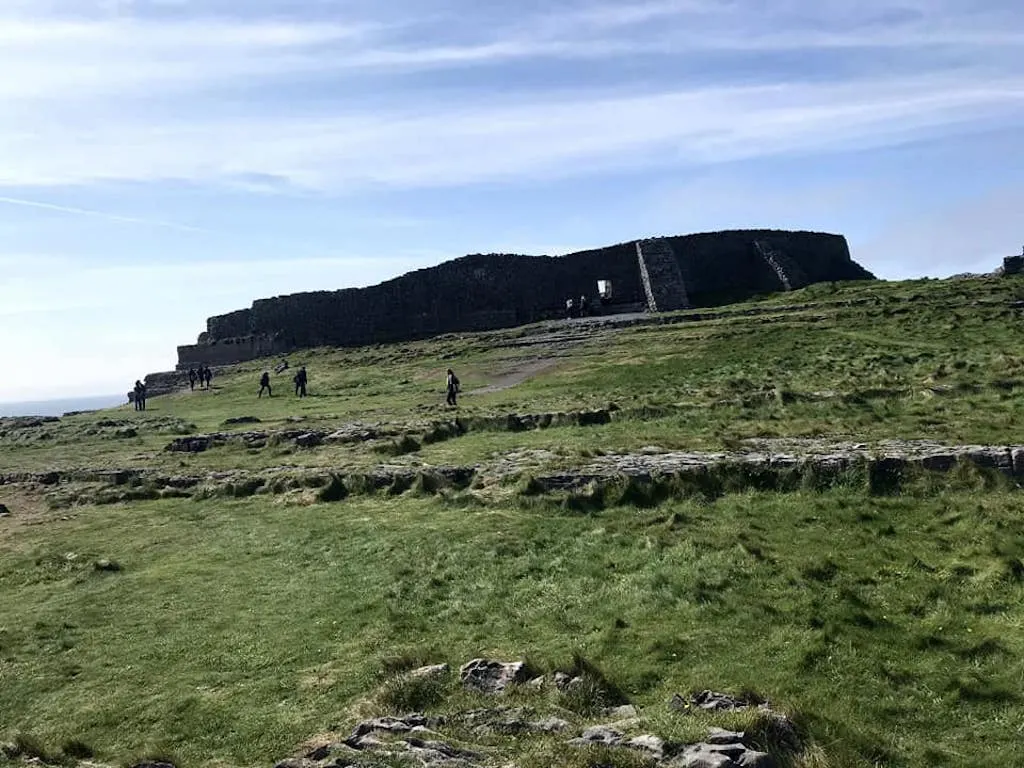
Dunguaire Castle
Dunguaire Castle is one of the prettiest and most photographed structures in Ireland. The castle itself is beautiful, but its unique position on Galway Bay adds to the allure. During high tide, it is surrounded by water, which gives it such a prominent appearance.
Built-in 1520 by the O’Hynes clan, it has a 75-foot tower you can climb and fortress walls. The castle was named after the O’Hynes’ ancestor Guaire, the king of Connacht. In addition to having a history as an important Irish castle, it also has an interesting literary past. In 1924, it was sold to Oliver St. John Gogarty, who was a patron or the arts with a love of poetry. Dunguaire Castle was frequented by George Bernard Shaw, W.B. Yeats and other well known Irish poets.
Dunguaire Castle has been renovated and to this day is a good example of 16th-century life. You can tour the castle during the day, but many people visit in the evening for the popular Medieval banquets. The hours change between seasons, so it’s best to check the website for accurate information. Plan a few hours for a visit and make sure to take a walk around the outside.
Located on the Wild Atlantic Way Dunguaire Castle is found just on the outskirts of the town of Kinavara, approximately 30 minutes from downtown Galway. If you are taking a trip to the Cliffs of Moher from Galway, you can easily add this stop to your day. It is also very close to The Burren. All three can easily be seen in a day on a 7 Day Ireland itinerary.
Explored by Jenifer Byington from The Evolista

Dunluce Castle
Situated on the dangerous Antrim coastline of Northern Ireland, Dunluce Castle is a magnificent ruined fortress from as far back as the 13th century.
Exploring Dunluce feels as if you have been dropped into Game of Thrones or Lord of the Rings. It is surrounded by grassy hills and jagged rocky cliffs. The castle sits on an outcrop of land with only a bridge connecting it to the mainland. This gave it a great strategic advantage for defence. There is even a hidden waterway to the ocean from beneath the castle for supplies during a siege or an escape.
Dunluce Castle became an important stronghold during the 16th century when the McDonnell family turned it into their main home base as they consolidated their properties in Scotland and Ireland. They continued to live there until 1639 when the castle’s kitchen fell into the sea below, and they finally decided to leave. The castle is still owned by the McDonnell family to this day, but sits in ruin.
There are great vantage points in the area of the castle to get some amazing photos. Take a walk up the grassy hills along the trails to get an overview of the castle. You can also walk along the coastal cliff-sides in either direction to get a nice view of the castle on its outcrop. It is Ireland, so the trail and hills can get quite muddy so make sure you are properly dressed.
The castle can be reached on a day trip from Belfast or Derry. It is in the same general area as some other popular Irish spots like the Giant’s Causeway, The Dark Hedges and Carrick-a-Rede rope bridge. You can spend a good hour or so exploring the castle grounds and going for a cliff walk imagining the history and battles fought there.
Explored by Nathan Sado from Fit Living Lifestyle
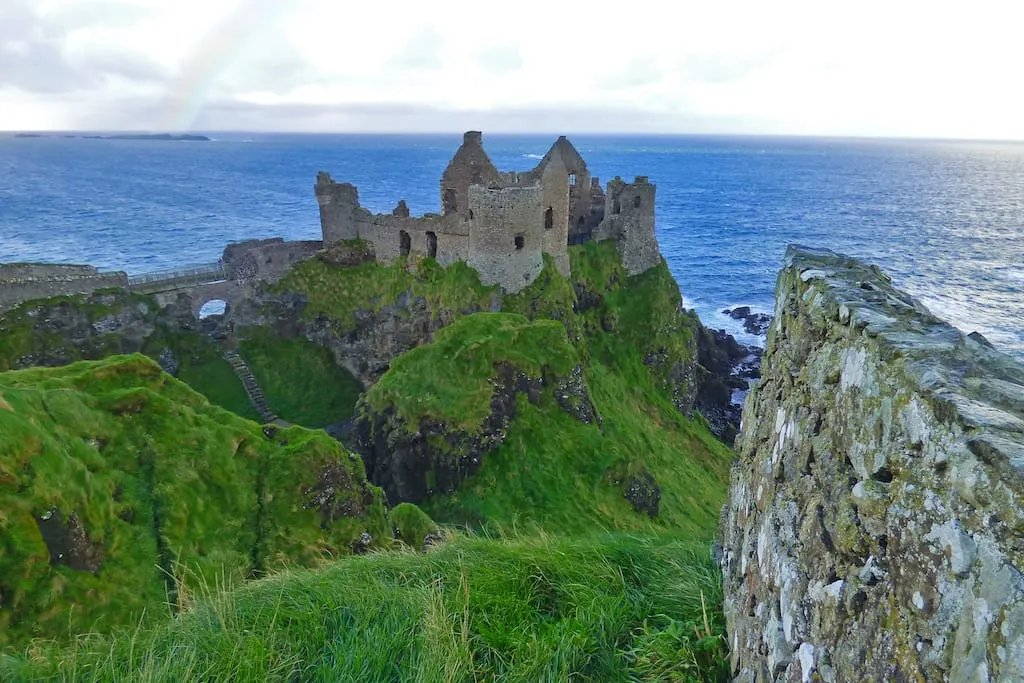
Dunquin Pier
Nestled on the southwest tip of Ireland is a tiny harbour that is home to the picturesque Dunquin Pier. The winding path that snakes down the cliff towards Dunquin Pier, Dun Chaoin in Irish, has featured on postcards of Ireland for decades.
The view is indeed as beautiful as the photos portray and Dunquin is a must for any visitors to Dingle. The pier is also referred to as ‘Sheep’s Highway’ in reference to the sheep which file up the path after arriving on the passenger ferry from the Blasket Islands! These days the sheep are a rare but incredibly special sighting.
Dunquin Pier is the main harbour that services The Blasket Islands. Deserted in the 1950s, today the islands can be visited by the daily ferry crossings which leave from Dunquin Pier. A trip to the Blaskets is like stepping back in time, and it’s only by setting foot on the remote islands that visitors can imagine how hard life was like for those who resided here years ago.
Dunquin Pier is located on the scenic Slea Head Drive in Dingle in County Kerry and is one of the most popular things to see in the county. Dunquin is most easily accessed by car, and a short walk from the car park takes visitors to the incredible view of Dunquin Pier below. Care should also be taken on the cliffs as they are not fenced, and the drops aren’t marked.
Visitors are asked not to attempt to try and drive down the narrow pier road as they will get stuck. There have been numerous cases of tourists getting stuck overnight in their cars and having to be rescued the next day!
Explored by David from Your Ireland Vacation

Gap of Dunloe
The Gap of Dunloe can be found just outside of Killarney, Ireland. This popular destination can be visited as part of a trip to the Ring of Kerry or as a day trip from Killarney.
The Gap of Dunloe is a particularly scenic part of County Kerry, which is saying a lot in such a beautiful part of Ireland. It’s a mountain pass where the MacGillycuddy’s Reeks, Ireland highest mountains, and the Purple Mountains meet. This makes for very dramatic scenery, including waterfalls and rocky cliffs. There are several lakes found here as well as a charming stone bridge known as the Wishing Bridge.
One of the most popular ways to visit is to take a jaunting car down the narrow road that goes through the Gap of Dunloe. Contrary to popular belief, you can drive this road as well though you may get stuck behind horses. If you have more time, it’s worth doing a boat tour across Lough Leane and then walking or biking the Gap of Dunloe to get the most out of the experience.
As part of a visit to this area, you can visit both Lord Brandon’s Cottage and Kate Kearney’s Cottage. They can be found at opposite sides of the Gap of Dunloe, and both are now tea shops. Kate Kearney’s Cottage is part of the local lore of the area. During the 18th century, Kate apparently sold illegal whiskey to travellers at this cottage.
While the Gap of Dunloe isn’t part of nearby Killarney National Park, it has long been on the tourist trail. It became popular among wealthy tourists in the 1700s that were seeking wild-looking landscapes. You are sure to find that here still, and of course, the occasional sheep or two.
Explored by Brianna from Curious Travel Bug
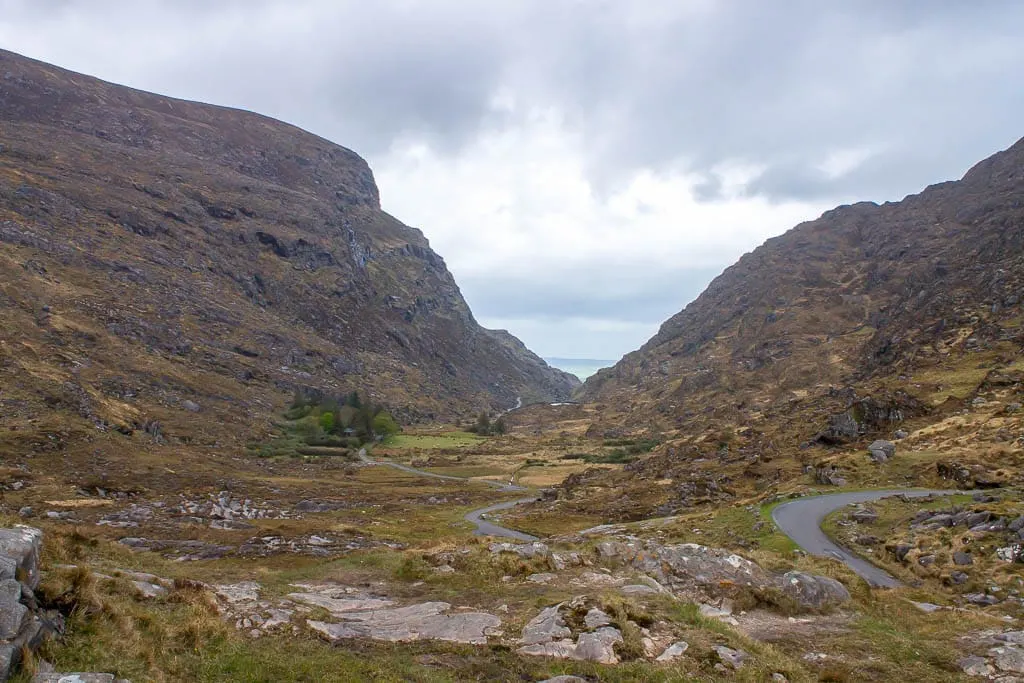
Giant’s Causeway
Located along the famous Causeway Coastal Route, the eponymous Giant’s Causeway is a unique blend of Irish folklore & mythology and Science!
A UNESCO World Heritage Site, the Giant’s Causeway is made up of 40,000+ interlocking, hexagonal basalt columns, reaching out over the Atlantic Ocean and flanked by sharp cliffs on the other side. It is the result of volcano activity from 60 million years ago, an incredible geological marvel – or is it really? Irish folklore has something else to say about it.
Legend has it that the Giant’s Causeway was built by the Irish Giant (think that one was quite obvious!) Fionn mac Cumhaill as stepping stones across the water to meet the Scottish Giant Benandonner for a fight. That he then got scared and hid disguised as a baby thus scaring away Benandonner is a story you should watch at the Visitor’s Center – it’s delightful and awe-inspiring at the same time!
Even if you were to scoff at the myths, there is no denying the intriguing nature of the place and its breathtaking beauty. The ruggedly symmetrical columns act as stepping stones between the dramatic cliffs and the wild sea – it’s nature at its best.
The Giant’s Causeway is located on the North Coast of the island, in the county of Antrim in Northern Ireland, close to the towns of Bushmills and Ballycastle. It’s best visited as part of a drive on the Causeway Coastal Route. Try and make it your first stop, so you avoid the crowds and plan to spend at least 2-3 hours at the place.
To visit the Giant’s Causeway, buy a ticket at the Visitor’s Center and spend some time at the displays there to take in both the legend & the Science behind the place. Then take the ~1 km walk down to the actual causeway. There is a bus that runs on this route too, but the walk is so superbly scenic that it really should not be missed!
The Giant’s Causeway is one of the most spectacular natural phenomenons in Europe and absolutely a must-visit during a visit to Ireland.
Explored by Smita from My Faulty Compass
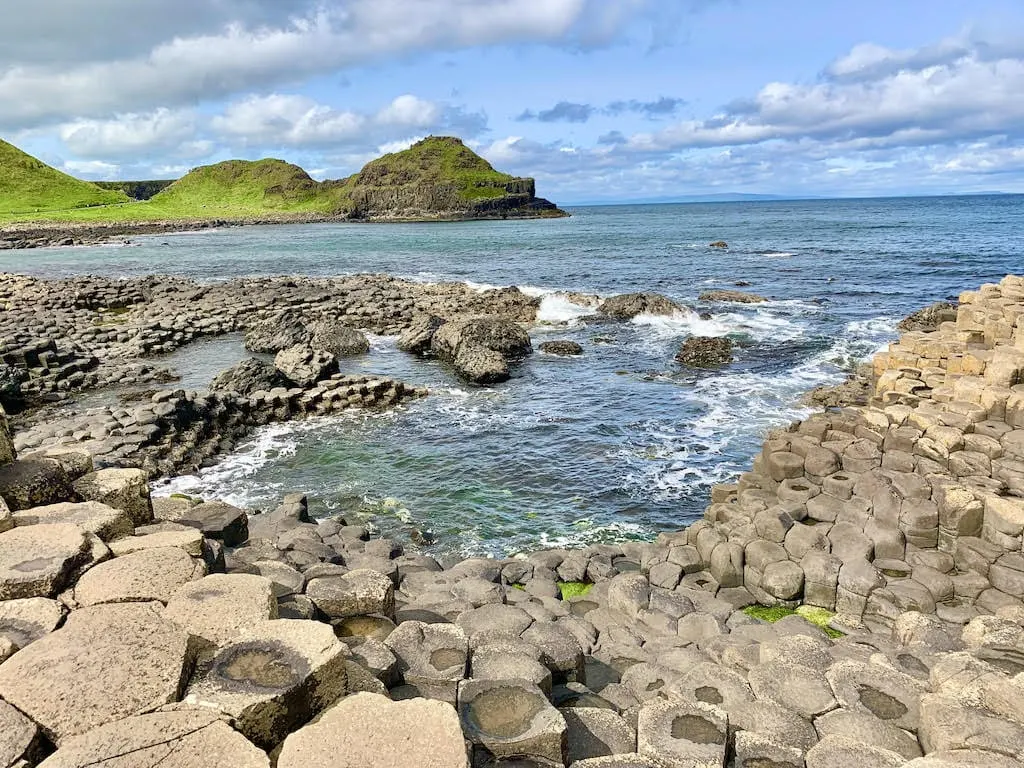
Glendalough Monastic Site
You cannot have a list of famous landmarks in Ireland and not include Glendalough Monastic Site.
Located in County Wicklow, the Glendalough Monastic Site is a great day trip from Dublin. Founded by Saint Kevin in the early 6th century, visiting this early Christian settlement is like stepping back in time. After visiting the Visitors Center, head toward the site itself. You begin by entering through the ancient medieval gateway.
This gateway is a premier example of ancient Roman architecture and served as the entry point into the settlement.
Once inside the site, you will notice that there are several structures and buildings for you to explore, most of which date back to the 11th and the 12th century. The most notable of these is the Round Tower, which stands 30m high! In addition to the gateway and the Round Tower, the site also consists of seven churches, the priest’s house, two High Crosses, a graveyard, St. Kevin’s Cell (hermitage hut), and St. Kevin’s Bed (cave). Be sure to take time to visit and explore each of the structures, as each is unique and historic.
While in this area, take some time to explore the valley and lakes that originally drew Saint Kevin to this area. If you visit the Upper Lake, you will find the cave where Saint Keven spent seven years of his life. You will find several other trails throughout the beautiful Wicklow Mountain area just waiting to be explored.
Explored by Michelle from That Texas Couple
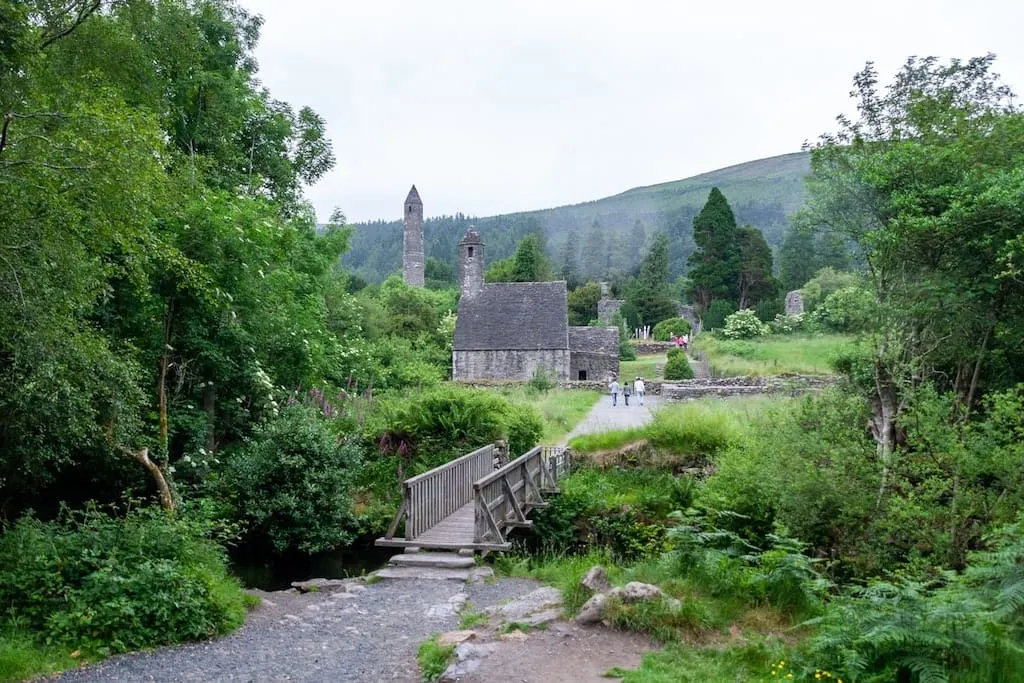
Guinness Storehouse
The Guinness Storehouse is truly the best out of all the famous landmarks in Ireland. It’s the very place where Ireland’s best beer, Guinness, is brewed!
It’s been in the very same location since the late 18th century when Arthur Guinness signed a 9,000-year lease! Seriously, Guinness isn’t going anywhere.
This storehouse is made up of seven floors. If it was filled up with beer, it’d be the biggest pint glass in the whole world! What’s so great about the Guinness Storehouse is that it’s extremely interactive. You can have fun with a lot of the exhibits; watching short films, testing your knowledge, and even learning the right way to drink Guinness!
The true highlight of the storehouse is the Gravity Bar at the top. You can turn your ticket in for a free pint and enjoy panoramic views of Dublin down below. Of course, this part of the museum can get the busiest because of the view, so try to come earlier in the day for your tour if you can.
All tours are offered with a time slot, so you’ll want to purchase your tickets well in advance to make sure that you can get a time that works easily for you. Once you’re inside, you can stay for as long as you want!
The storehouse is located in a pretty central area right near the River Liffey, so it’s not too difficult to get to. You could drive or utilize public transportation. For buses, the 40 towards Liffey Valley, 123 towards Walkinstown, and the 13 towards Grange Castle all have stops right nearby. The red LUAS line also has a stop on James’s right nearby.
Explored by Krystianna from Volumes & Voyages
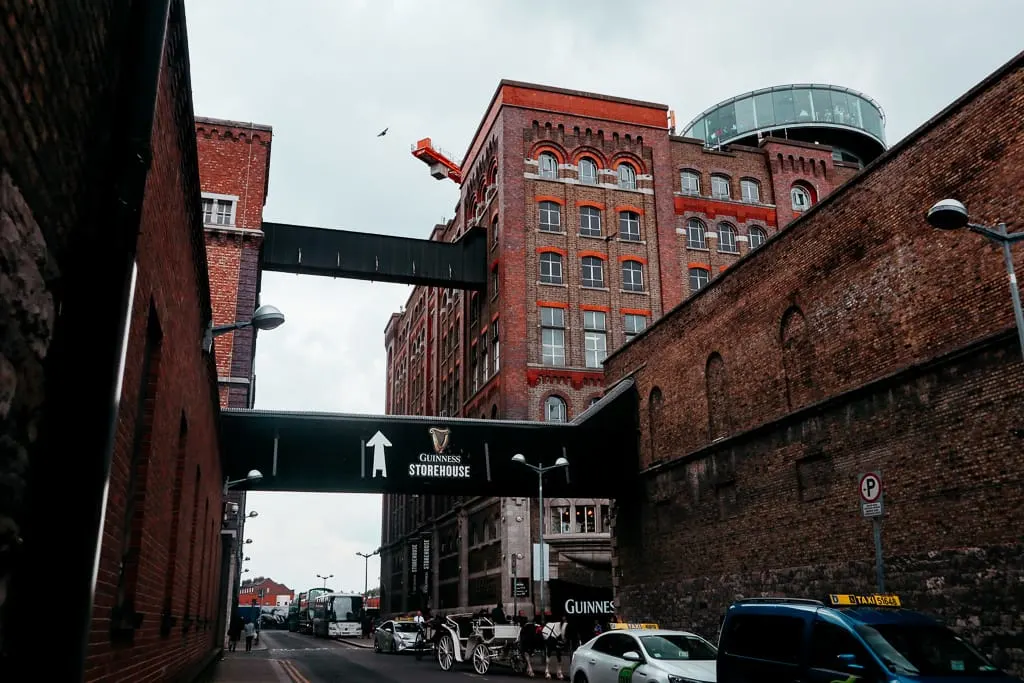
Kilmainham Gaol
It is a haunting sight. High stone walls, cavernous courtyards and cold, damp quarters. It was hard to imagine this as a state-of-the-art penitentiary in 1796, but that is exactly what Dublin’s Kilmainham Gaol (pronounced jail) was. It housed men, women and even children for everything from petty crimes of stealing food to murder and insurrection. Its youngest prisoner was seven when caught stealing food.
This was one of the original penitentiaries which hoped that through reflection (penance) and reading the bible; prisoners would be rehabilitated. Sitting in a cell with only The Bible and their thoughts, over 4,000 prisoners waited here before they were shipped off to penal colonies in Australia. The gaol had separate areas for men and women who were seldom together with the exception of Sunday service. There was both a Catholic and Protestant Chapel.
Kilmainham Gaol was closed in 1924 after years of holding and at times executing both men and women for heinous as well as political crimes. The museum illustrates the struggle of Irish nationalism, the Irish-Anglo conflict, including multiple insurrections. At it’s most gruesome the history of how those convicted of the 1916 Easter Rising were imprisoned and executed. There is an eerie single cross in the courtyard commemorating the event.
That kind of history is what you will find in spades at the Kilmainham Gaol Museum. You can visit the Kilmainham Prison by purchasing your tickets in advance (no walk-up visitors are accepted at this time). You will be required to wear a mask, and guided tours have been made smaller to adhere to social distancing protocols.
Whether to take a tour bus or public transport, a visit to Kilmainham Gaol is worth a stop on your tour of Dublin. The gaol is considered an important national monument to the Irish struggle for independence from Britain.
Explored by Margarita Ibbott from DownshiftingPRO
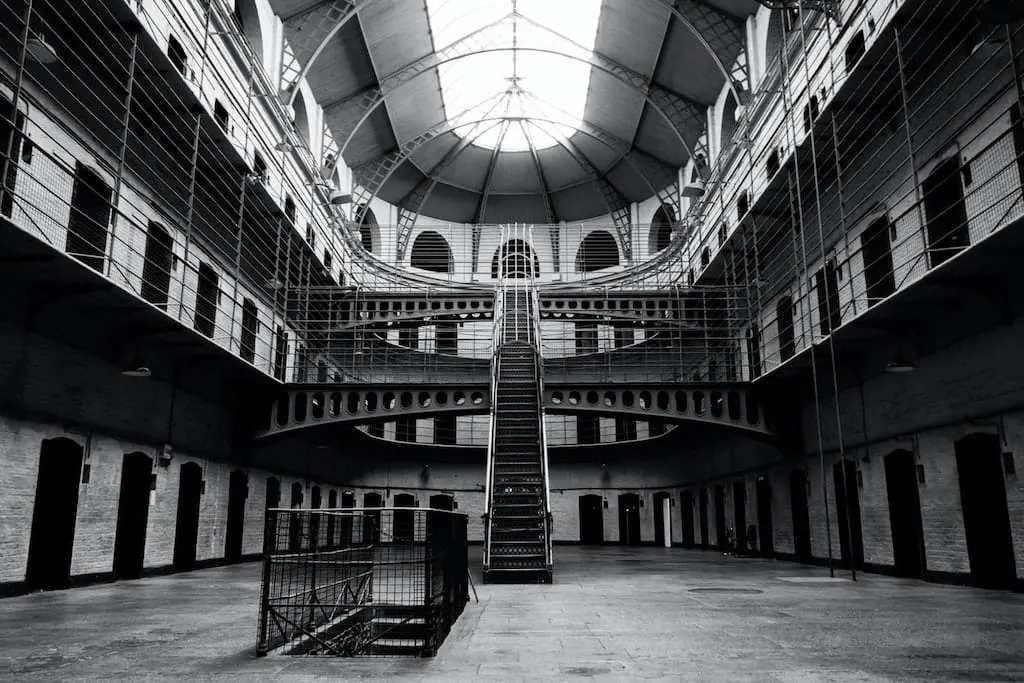
Kylemore Abbey
Initially constructed as a castle as a sensual gift in 1867, the Kylemore Abbey and the nearby mountains and lakes are steeped in tradition filled with tales of catastrophe, romanticism, engineering, gambling and royal visits. Around 1920, it became host to a Benedictine Nuns congregation and became known as a centre of meditation and learning.
Kylemore’s tale – Castle and Abbey alike – is a genuinely amazing one. From the inception to the modern-day, the changes of destiny that have shaped its existence converge to construct a vivid and changing narrative. Tucked away at the foot of Druchruach Mountain on the edge of Lough Pollacappul (in he heart of the Connemara Mountains,) in the west of Ireland, this is not only one of the most famous landmarks in Ireland – but one of its most gorgeous. It is all very moody, and it reminds us of the melancholy nature of nearby Scotland.
The Benedictine community is still very much present here though the school closed in 2010 and the property focussed now on education and retreat activities. The nuns have done an incredible job restored Abbey’s gardens and church with the help of endowments, and regional artisans have also been brought in to ensure the continuance of this self-sustaining estate.
Today the Kylemore Abbey and the grounds are open to guests throughout the year and the main areas to enjoy include the Abbey, the Gothic Church, the Victorian Walled Gardens, and the quiet lake and woodland walks. There is also a cute tea room, craft shop and restaurant to complete the visit.

Mussenden Temple
Mussenden Temple is located near Castlerock in Country Londonderry in Northern Ireland. The temple sits on a 120 feet high dramatic cliff, overlooking the Atlantic Ocean.
Mussenden Temple was originally built in 1785 and formed part of the estate of Frederick Augustus Hervey, Bishop of Derry and Earl of Bristol (or the Earl Bishop). The temple was built as a summer library, and the temple’s architecture is inspired from Temple of Vesta in Tivoli, Rome. It was once possible to drive a carriage around the temple. However, now due to coastal erosion, the temple stands closer to the edge of the cliff.
Hence in 1997, understanding the importance to preserve the building, National Trust carried out cliff stabilization work to ensure the building is able to sustain coastal erosion. The entire temple and surrounded Downshill Demesne are part of National Trust and is open to the public all year round. Offering sweeping views of Downhill beach on the west and as far as Magilligan Point and County Donegal and Castlerock beach towards Portstewart, Portrush and Fair Head. On the east.
Needless to say, the temple is one of the most photographed tourist spots in Ireland.
The attraction is also popular amongst Game of Thrones fans, as Mussenden Temple appears as Dragonstone in the season seven of the series.
While driving by car is the best option to reach the attraction, there are trains that connect to Castlerock from Belfast and Londonderry.
Explored by Anuradha from Country Hopping Couple
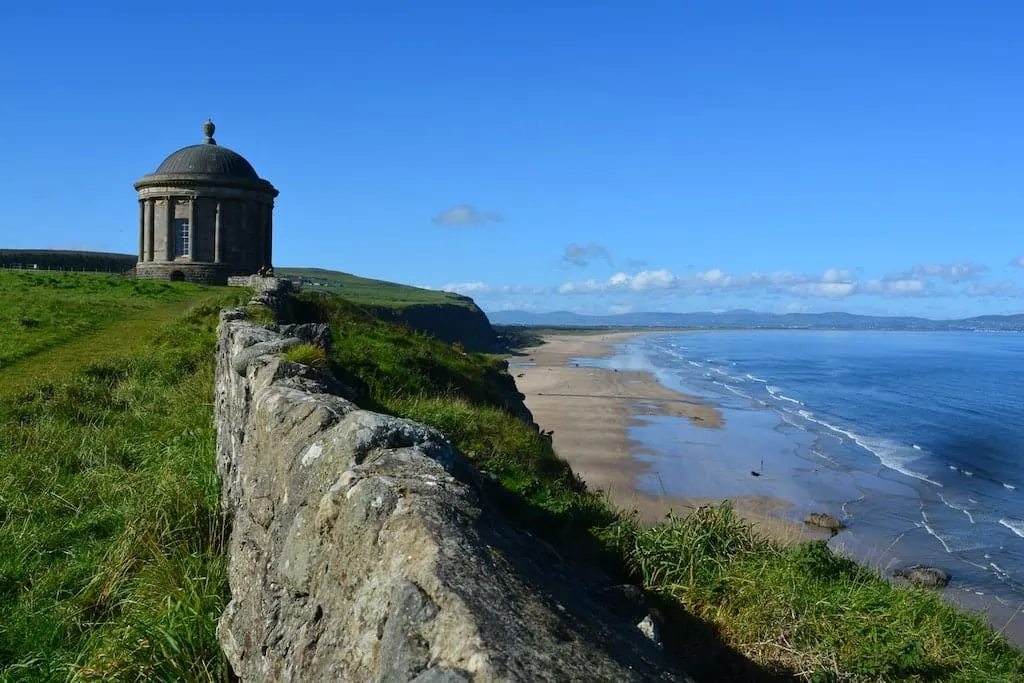
Rock of Cashel
The Rock of Cashel is located in the beautiful County Tipperary and is one of the most amazing structures to be seen in the country. This iconic location towers over the traditional town of Cashel. The Rock of Cashel is also known as Cashel of the Kings.
It was once the seat of the High Kings of Munster long before the Norman invasion. The majority of the buildings at the site date back from around the 12th and 13th centuries which is when the rock was gifted to the church.
This is truly a fantastic place to visit, and no photos can give justice to the grandeur and beauty of the architecture on offer. It’s no wonder it’s one of Ireland’s most visited sights. Entrance costs €8.00 for adults, and there is lots of information given to learn more about the history, including a small museum. You can even take a guided tour which runs multiple times a day.
This excellent spot will take around 1 hour to visit, and if you visit on a sunny, clear day, you’ll have beautiful views of the surrounding countryside and the town of Cashel. If you’re taking an Irish road trip, then stopping at the Rock of Cashel will be easy with your own car. But you can also get organized tours from both Kilkenny and Cork if you prefer. The site is open from 9 am to 7 pm (depending on the time of year), but visit early, or just before closing to avoid the crowds.
Explored by Cazzy Magennis from Dream Big, Travel Far

Skellig Islands
Without a doubt, one of Ireland’s most iconic landmarks is the island of Skellig Michael. Situated roughly 12 kilometres off the coast of County Kerry, this rocky outcrop is so remote and unique, that its otherworldly nature has attracted people for centuries.
Monks first settled on the island between the 6th and 8th centuries and lived simple, very isolated lives until about the 13th century. The remains of their early monastic settlement, including their well-preserved stone beehive huts, can still be seen today. The island’s unparalleled beauty and secluded nature has become even more famous since it was recently featured as a Star Wars film location.
Since 1996, the island has been designated a UNESCO World Heritage Site due to the remarkable preservation of the early Christian settlement. In addition to its important cultural heritage, the island, along with the other smaller surrounding islands, is a protected seabird sanctuary. To minimize the impact of tourism and disruption to the fauna, tours to the island only run during the summer months (usually mid-May to September) and visitor numbers are limited by a daily quota.
As demand is high, it is necessary to book your ticket to the island well in advance to avoid disappointment. To reach the island, you must take a ferry from Portmagee, Caherdaniel or Ballinskelligs Pier, which takes about an hour. After landing on the island, tourists generally have roughly 2.5 hours to explore the island. Comfortable footwear is advised. There are over 600 steps to climb on the island if you want to experience the amazing views at the top.
There are also no facilities on the island, so whatever you need, be sure to bring it with you. It is worth keeping in mind that during poor weather conditions, the ferry sailings will be cancelled.
Explored by Emer and Nils from Let’s Go Ireland
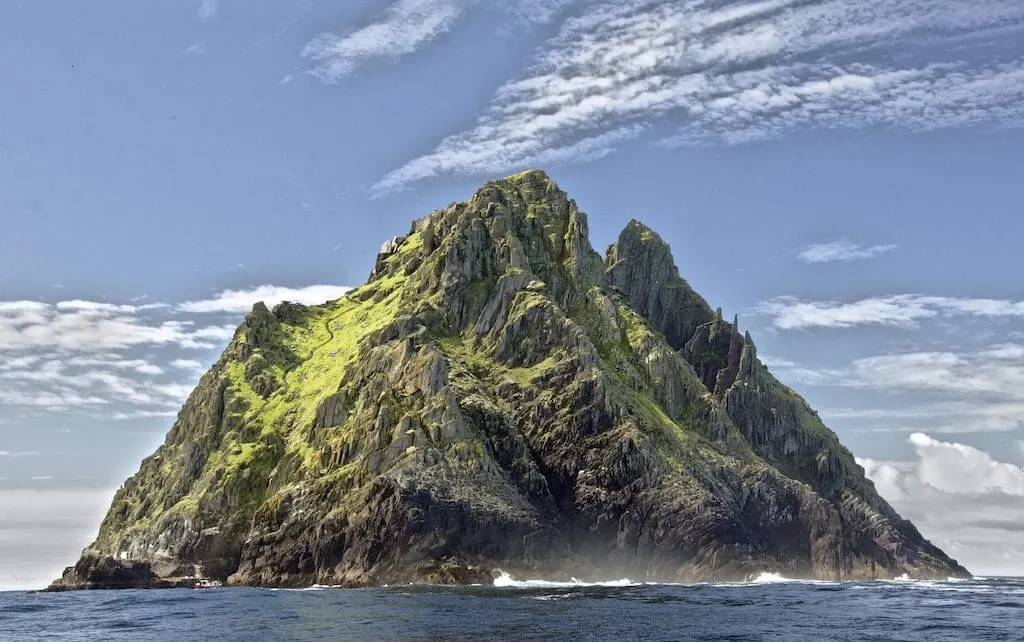
Slieve League
Donegal’s Slieve League Cliffs are among the most striking natural attractions in Ireland. The cliffs (also sometimes known as Sliabh Liag) tower over their surrounding landscape and plunge nearly 600 meters into the churning Atlantic Ocean below.
The Slieve League Cliffs lie along the Wild Atlantic Way, between Donegal town and Ardara. From Teelin, a narrow road leads to the rugged scenic area.
The Slieve League cliffs are free to visit and contain two main parking lots. The lower car park is located near a gate that remains closed in order to stop the movement of sheep. If you open the gate and drive beyond it, the road continues to an upper car park that sits conveniently near one of the area’s preeminent lookouts.
From the upper car park, a precipitous footpath leads along the edge of the sea cliffs, to One Man’s pass. The narrow trail affords breathtaking views of the towering rock faces and pounding surf. On a clear day, it is possible to see across the water to Sligo, Leitrim and Mayo counties.
Though Slieve League is most notable for its natural splendour, the area is also home to historical relics. Ancient stone remains near the cliffs suggest that the area was once a pilgrimage destination. Nearby, an early Christian monastic site sits high on the surrounding slopes. And by the main viewing area, a tower stands look out over the dramatic coastline. The tower was built in preparation for a possible Napoleonic invasion in the 19th century.
The soaring cliffs of Slieve League are among the top places to visit in County Donegal. Yet, while they are three times taller than the infamous Cliffs of Moher in County Clare, they receive only a fraction of the visitors.
In fact, despite their geological grandeur, the iconic Slieve League Cliffs remain blissfully crowd-free and off the beaten path—at least for now.
Explored by Erika from Erika’s Travels

St. Patrick’s Grave
Celebrated throughout the world, St. Patrick’s Day has become synonymous with Ireland, Christianity, the shamrock, the colour green, beer and parades. Saint Patrick is the most revered saint in Ireland, and his gravesite can be found on a very short trip from Belfast in Northern Island.
St. Patrick’s Grave and Down Cathedral are located on Cathedral Hill, the highest point of the Mound of Down in Downpatrick, Down Country. Only 20 miles from Belfast, Downpatrick Cathedral, its ancient graveyard, and Celtic Cross are right next to the Down County Museum (in the 18th-century gaol) and the Saint Patrick Center.
Saint Patrick was born in Roman Britain and abducted as a slave to Ireland when he was 16 and spent the next six years as a herdsman. He returned to Britain but decided to become a missionary in Ireland, building churches and preaching in north and west Ireland. He routinely risked being killed for his beliefs.
Myths and legends have sprung up about St Patrick, and it feels like there’s a relic of the saint in every town, but his grave is visited by thousands of pilgrims a year. Saint Patrick died in 471 AD and is buried along with the two other most famous Catholic saints of Ireland (Saint Brigid and Saint Columcille) in a grave in front of the Cathedral. In 1900 the grave had an enormous slab of granite placed upon it to stop an old practice where Irish who were emigrating took a small amount of earth from the grave with them to their new countries.
In addition to seeing the grave, it is worth spending time wandering through the graveyard as the gravestones date from the 1500s. The Cathedral is also worth a visit. In addition to a magnificent pipe organ, the stained glass windows tell the story of the life of Saint Patrick.
Explored by Monique at Tripanthropologist.com
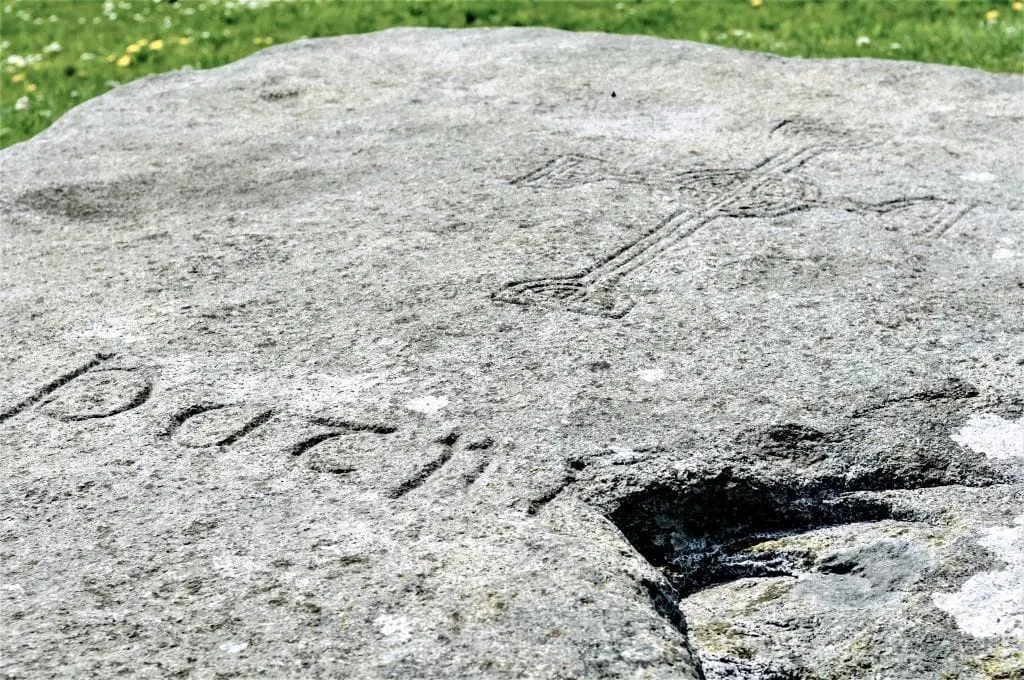
The Custom House
Dublin’s Custom House is considered one of the most iconic landmarks of the city, a masterpiece of European neo-classicism, that took ten years to complete. When it was in opened 1791, its total cost has come to cost £200,000 to build – a considerable sum at the time and was used to collect tariffs on goods for the port.
Situated on the north side of the Liffey River, near Butt Bridge and Talbot Memorial Bridge on Custom House Quay, the ports moved downriver over time, and this grand building became obsolete. The primary function of the Custom House was then as used by local government, until during the Irish War of Independence the house was burned to the ground on 25 May 1921; in an attempt to disrupt British rule in Ireland.
Thankfully, after the Anglo-Irish Treaty, it was reconstructed by the Irish Free State government, but with local materials — and of course, the historical records within were lost forever. Make sure it is on your list of places to see at Dublin, especially at night when it is lit up and looks phenomenal from across the river.
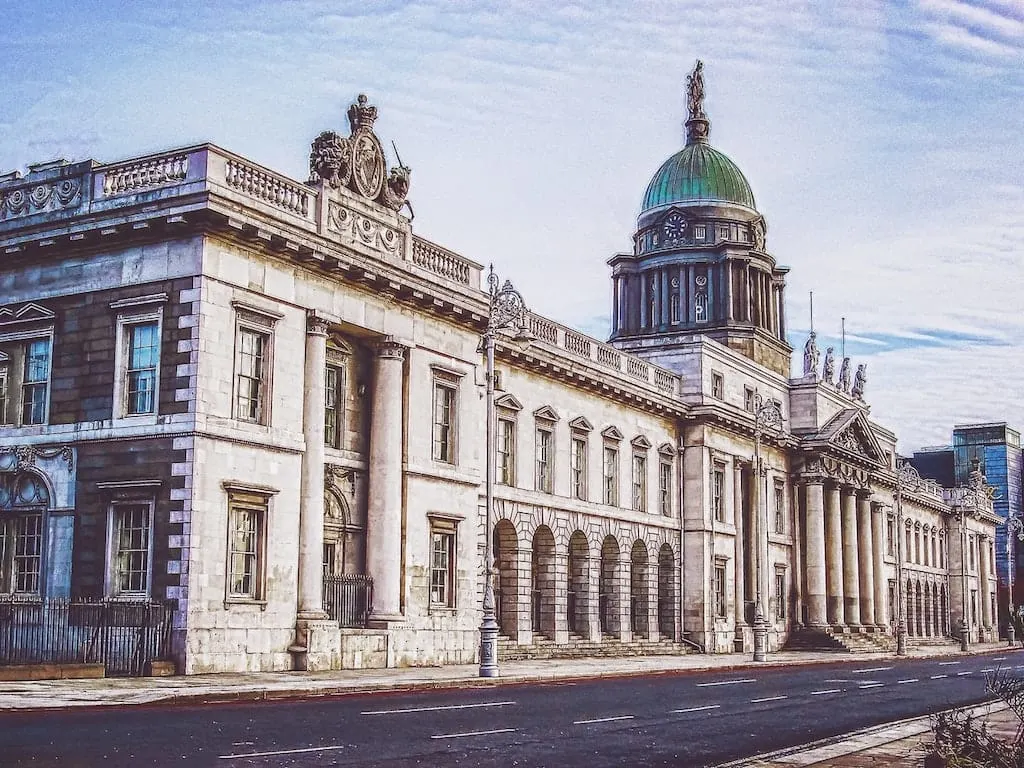
The Dark Hedges
The Dark Hedges is one of those magical landmarks that you can only appreciate in person. The road is a photographer’s dream, and people visit from all over the world to get that perfect atmospheric shot. It is even believed to be the most photographed place in Northern Ireland!
Since the Dark Hedges was used as a location for the HBO television series Game Of Thrones, it has become an incredibly popular tourist attraction. The series featured the area as the King’s Road, but the scenes showing the Dark Hedges in all their glory barely lasts a minute! It was still enough to convince fans to flock to the filming location!
The tunnel of beech trees was planted along the roadside in the eighteenth century as an entranceway to the new Stuart family house. The Gracehill House belonged to James Stuart and Grace Lynd and still stands there today as a golf course. Their daughter’s spirit is said to float through the trees, so look out for her if you arrive at dusk!
There are many tours that can take you to the Dark Hedges, but you’ll be one of many buses/vans vying for space. You can also hire a car to get there. Not only will you have more freedom but you can visit when the hordes of tourists aren’t there to ruin the moment.
To get there by car just enter The Dark Hedges into Google Maps, or enter Bregagh Road, Ballymoney BT53 8TP. You can approach the trees from the Northern end, or Southern end and both views offer something a little different. If you want my opinion, then I preferred the view from the Northern end, looking south!
My tip for getting the most out of your visit is to hire a car and get there early morning or late afternoon. You’ll see the road without as many tourists and can take as long as you want to photograph this magnificent landmark.
Explored by Jeff from Life Of Y
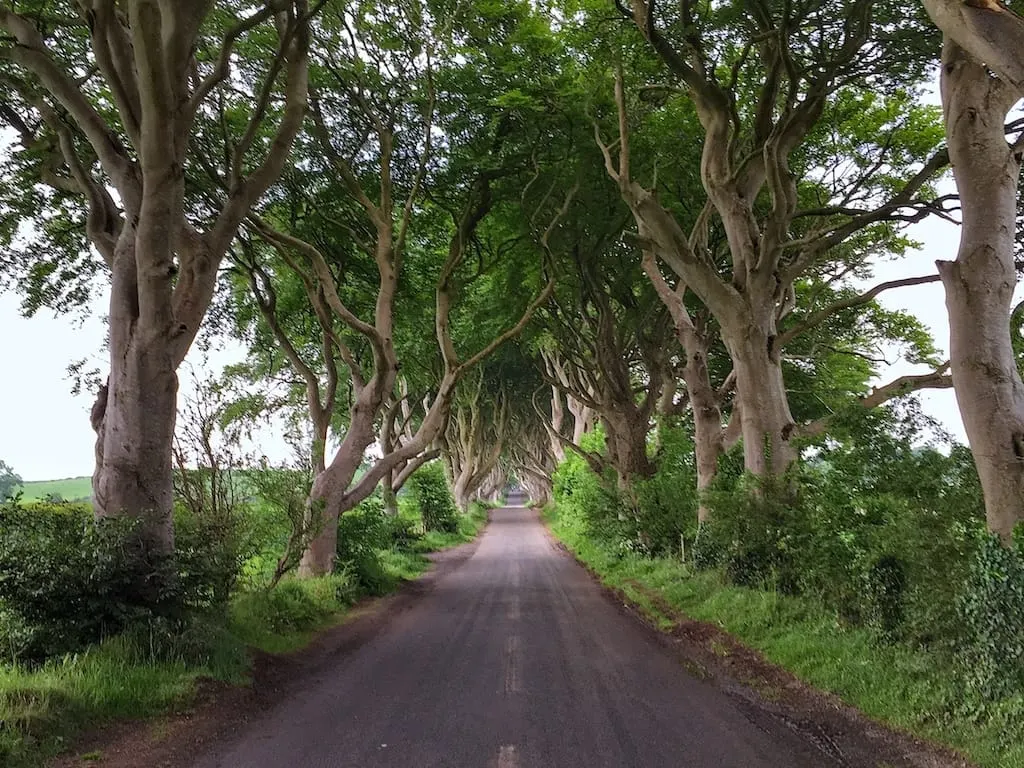
The Stairway to Heaven
The Stairway to Heaven, and no not the Led Zeppelin song but an incredible 33km trail that goes up a mountain in Fermanagh, Northern Ireland known as the Cuilcagh Legnabrocky Trail. The trail leads up Fermanagh’s highest mountain, and in Gaelic, its name means chalky peak. It is certainly one of the most famous natural landmarks in Ireland – and should feature on your Ireland travel plans.
Sitting on the border of Cavan in the Republic and Fermanagh in the north this area within the Cladagh Glen Nature Reserve which was recognized as one of the first UNESCO European Geoparks. It is also the world’s first transnational cross-border Geopark.
The park is around a 3-hour drive from Dublin, and yes you will need a car to get there. The other option is to take a tour which will cost around €60 euros. If you drive you can park at the Marble Arch Caves Car Park which will cost £5, but they’ll take five euro if you haven’t any sterling.
The Stairway to Heaven is a 1.6 km boardwalk that was built to protect a unique habitat known as a blanket bog. The bog was facing erosion from walkers doing the hike, and so a 1.6 km boardwalk was built to protect the bog.
The hike itself takes around 4 hours to the top and back and includes 450 stairs to the top. Fortunately, there are rest platforms along the way from where you will have stunning views of the countryside and Loch Antona.
Explored by Faith from xyuandbeyond.com
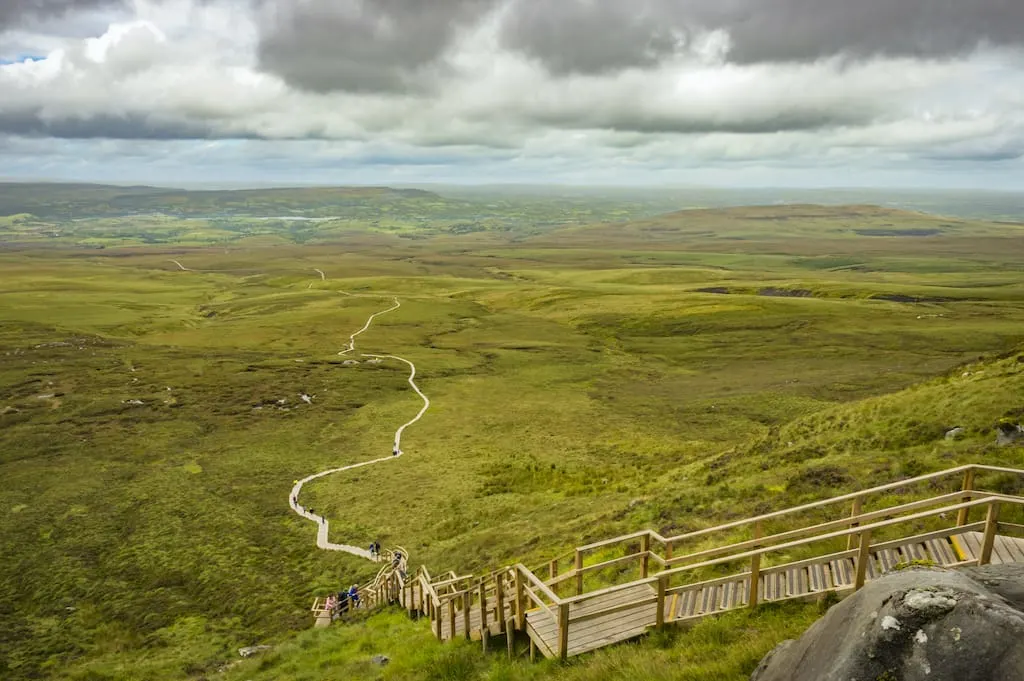
Titanic Belfast
Situated in the Titanic Quarter area of Belfast, Northern Ireland, the iceberg-shaped Titanic Belfast museum is one of the most iconic landmarks in the city. Symbolic of the city’s long shipbuilding heritage, this museum guides visitors through the story of Belfast’s relationship with shipbuilding through the ages before introducing us to the most famous ship built in the city – the ill-fated RMS Titanic.
Designed by Eric Kuhne and Associates and Todd Architects, the building stands 38 metres tall, the same height as Titanic’s hull, and its design was intended to reflect Belfast’s history of shipbuilding through its angular form, which models the shape of ships’ bows. Opening in just 2012, this museum has fast become one of Northern Ireland’s most famous attractions, and for a good reason.
Although tickets aren’t especially cheap (£19 for standard admission), the museum has pulled out all the stops to give visitors value for money. From a virtual tour of the ship right from the bottom up to artefacts from the ship (and the beloved James Cameron movie!). There’s even a ride, which guides you through the shipbuilding process, complete with sweltering heat and hammering as the builders work around you!
Standard admission tickets also include entry to the SS Nomadic, the last remaining White Star Line Vessel, and the tug-boat which transferred first and second class passengers from Cherbourg to the Titanic.
To get from the city centre of Belfast to the Titanic Quarter (and if the weather is on your side), the walk is around 25-30 minutes. If you don’t fancy that, catch bus 26, 26A, 26B, or 26C from the Belfast Welcome Centre in the city which will drop you off at Titanic Belfast.
Explored by Ella from Many More Maps

Torc Waterfall
Torc Waterfall is one of the most recognizable landmarks in Ireland. Located in Killarney National Park, it is often referred to as one of the most beautiful waterfalls in Europe and visiting the waterfall is one of the highlights of the famous Ring of Kerry road trip. Even better- it’s only a 5-minute walk from the road, so perfect for a quick stop or a picnic lunch.
The falls are 20m high and 110m long and form a cascade, which is particularly impressive after heavy rain.
The waterfall can become very busy in peak season, especially at the lower viewing point. For the best experience, visit early or late in the day to avoid the crowds and also to have the best chance of seeing the elusive red deer which roam the woodlands, although they tend to avoid humans if they hear you.
You can reach the base of the waterfall via a short woodland path from the nearby car park. For the best spot to take photos, find the stone steps to the left of the waterfall and climb up to the higher vantage point. Here, you’ll not only have a superb view of the waterfall, but also over the Lakes of Killarney- breathtaking on a sunny day.
The path is uneven, and there are around 100 steps, so comfortable shoes and some mobility are a must. If you would like to do more hiking in the area, there are several different looped walks close by with a variety of difficulty levels.
Explored by Kat from Wandering Bird Motorhome Adventures
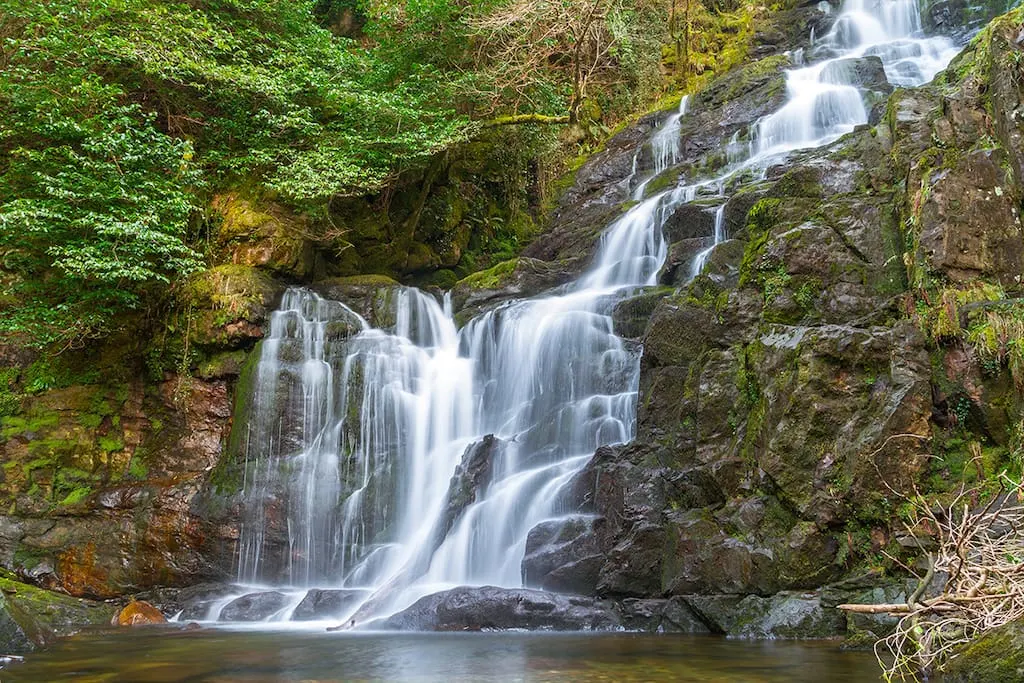
Trinity College
Trinity College, formerly Queen Elizabeth’s College of the Holy and Undivided Trinity in Dublin, is the University of Dublin’s only constituent college. Queen Elizabeth, I created the college in 1592 as “the mother of a university” based on the academic colleges of Oxford and Cambridge. Today, the designations “Trinity College” and “University of Dublin” are generally interchangeable for functional purposes.
It is one of Britain and Ireland’s seven ancient universities, and the oldest surviving university in Ireland. Trinity College is widely considered Ireland’s most prestigious university, and one of Europe’s most privileged academic institutions. In the fields of law, literature and humanities, the college is especially applauded.
Interestingly, in compliance with the ad eundem gradum rule, a type of acceptance that occurs between the University of Oxford, the University of Cambridge and the University of Dublin, a graduate of Oxford, Cambridge, or Dublin can be awarded with an equal degree without further review at any of the other two universities.
While Trinity was initially built outside of Dublin’s town walls, it is now surrounded by central Dublin and is situated opposite the old Irish Houses of Parliament on College Lawn. Trinity College was set up partly to unify the rule of the Tudor monarchy in Ireland, and as a consequence for much of its history was the University of Protestant Ascendancy.
Although Catholics were permitted from 1793, certain limitations on college membership existed, as Protestants were reserved for professorships, fellowships, and scholarships. An Act of Parliament in 1873 lifted those restrictions, but then the Catholic Church in Ireland explicitly prohibited its members from attending Trinity College without approval from 1871 until 1970.
The college campus is often considered one of the world’s most beautiful university campuses, mainly because of its legendary Georgian architectural buildings. It is, for this reason, it is considered one of the landmarks of Ireland, much like the University of Coimbra is considered one of Portugals and the University of Oxford, one of the United Kingdoms. The college campus covers 190,000 square metres (47 acres), with a vast collection of stunning buildings ranging from large quadrangles (known as squares) to two sports fields.
The Library of Trinity College is a legal deposit library for Ireland and Great Britain, protecting about 7 million published volumes and manuscripts, including the renowned Book of Kells, which came to college in 1661 for safe custody after the Cromwellian raids on religious organizations. The vast set stored in the Long Room contains a rare reproduction of the Irish Republic’s 1916 Declaration and a famous wooden harp from the 15th century that is the basis for Ireland’s national emblem.
Every year the library itself attracts more than half a million visitors, making it one of the biggest in Ireland and should not be missed.
